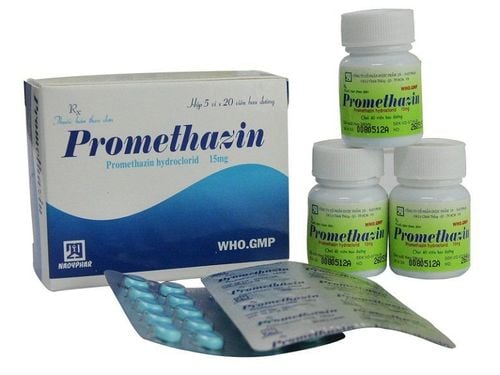This is an automatically translated article.
Ansidex is manufactured by Baxter Pharmaceuticals India Private Limited and registered by Baxter Healthcare (Asia) PTE Ltd., which belongs to the group of psychotropic drugs. In order to use the drug effectively, patients need to learn some information about the uses, dosage and notes when using Ansidex in the article below.
1. What is Ansidex?
Ansidex drug has the main ingredient containing the active ingredient Dexmedetomidine (in the form of Dexmedetomidine HCl) with a concentration of 100mcg/ml, prepared in the form of a solution for intravenous infusion, packing specifications: Box of 25 vials, 10 vials or 5 vials, each with a capacity of 2ml.
2. What are the effects of Ansidex?
Ansidex is indicated for the treatment of the following cases:
For sedation of patients at the beginning of endotracheal intubation and artificial ventilation during active treatment. Ansidex must be infused continuously for no more than 24 hours.
3. How to use and dose Ansidex
How to use Ansidex:
Ansidex is prepared in the form of a solution for intravenous infusion, performed by a doctor or qualified medical staff. Patients are advised not to use it at home on their own. Dosage of Ansidex:
The recommended dose is from 0.2 to 0.7 mcg/kg body weight/hour, in a study that demonstrated tolerability of Ansidex when used at and above the recommended dose in healthy subjects. strong. Dosage reduction may be considered in patients with renal or hepatic impairment.
4. Undesirable effects of the drug Ansidex
During treatment with Ansidex, unwanted effects may occur including:
Increased blood pressure, nausea and vomiting; Low blood pressure, bradycardia; Fever, fast heart rate; Lack of inhaled oxygen; Anemia . Usually these side effects go away when the patient stops taking the drug. However, it is recommended that patients should immediately report to their doctor when experiencing unusual symptoms for timely treatment and support.
5. Ansidex drug interactions
There is the possibility of increasing the effects of narcotic drugs, sedatives, anesthetics, Opioids when concurrently using Ansidex. The dose of Ansidex should be reduced if used concomitantly with the above drugs. Care should be taken with the use of tobacco, alcohol, alcoholic beverages or fermentation, as these agents can alter the composition of the substances in Ansidex, causing undesirable effects.
6. Notes when using Ansidex
The use of Ansidex is not indicated in the following subjects:
Patients with a history of hypersensitivity to Dexmedetomidine or any of the excipients in Ansidex. Ansidex should not be used in children under 18 years of age. There have been but animal studies and reports showing that Ansidex can cross the placenta when administered subcutaneously in animal tests. Therefore, Ansidex should not be used in pregnant women because adequate control is not available. Ansidex must not be used during labor, including cesarean delivery. Ansidex should not be used in nursing mothers because it has been excreted in milk in animal studies. Precautions when using Ansidex:
Patients must be continuously monitored when taking Ansidex in active treatment by qualified people. In different routes of administration and in different subjects, clinically significant sinus arrest and bradycardia and hypotension were observed. Caution should be exercised in patients with severe mental impairment and heart block. Due to Ansidex can reduce blood pressure, reduce activity of the emotional nervous system, slow heart rate. The first dose may cause transient hypertension. Ansidex must not be administered through the same intravenous catheter with plasma or blood. Ansidex infusion for more than 24 hours is not indicated. Use caution when using negative pacing agents or vasodilators when co-administered with Ansidex. Prolonged infusion of Ansidex and abrupt discontinuation may cause symptoms including agitation, nervousness, headache, or increased plasma catecholamine concentrations and blood pressure. In patients with adrenal insufficiency, after subcutaneous infusion of Ansidex for 1 week, an approximately 40% loss of Cortisol response to ACTH was observed. Ansidex dose should be reduced in patients with hepatic impairment, as clearance of Ansidex will be reduced. Ansidex dose reduction should be considered in patients older than 65 years.
7. Preservation of Ansidex
Store Ansidex medicine in a cool, dry place, avoid direct exposure to sunlight or high temperature, because these agents can cause changes in ingredients in Ansidex. Suitable storage temperature below 30 degrees Celsius.












